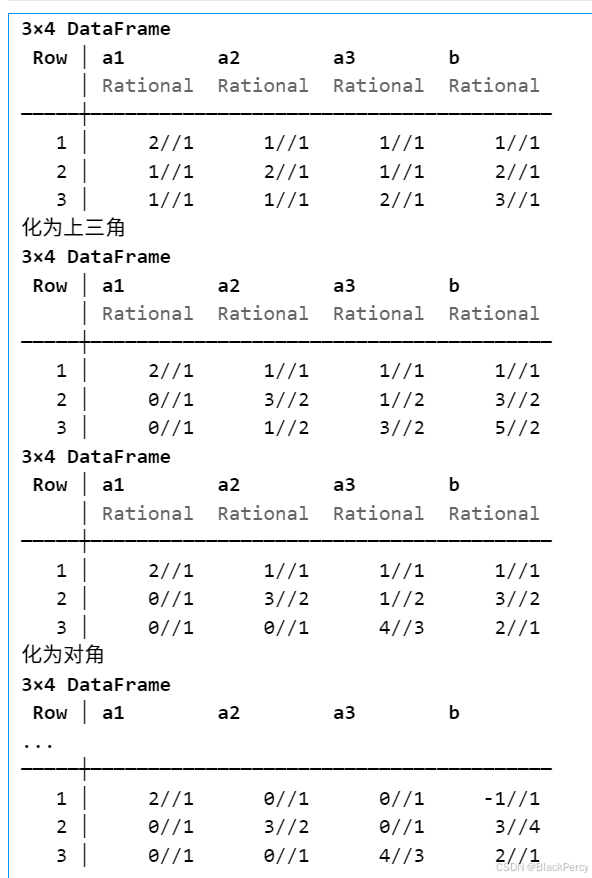
Elasticsearch 的 Ingest Pipeline 功能允许你在数据索引之前对其进行预处理。通过使用 Ingest Pipeline,你可以执行各种数据转换和富化操作,包括使用机器学习模型进行推理(inference)。这在处理词嵌入、情感分析、图像识别等场景中非常有用。
### 使用 Inference Ingest Pipeline
以下是一个详细的步骤,展示如何使用 Inference Ingest Pipeline 在 Elasticsearch 中加载和使用预训练的机器学习模型来进行推理。
### 步骤 1: 准备机器学习模型
首先,你需要准备一个预训练的机器学习模型,并将其部署到 Elasticsearch 的机器学习模块中。Elasticsearch 支持多种模型格式,包括 TensorFlow、PyTorch、ONNX 等。
#### 示例:上传 TensorFlow 模型
1. **下载或训练模型**:确保你有一个 TensorFlow 模型文件(例如,`.pb` 文件)。
2. **上传模型**:使用 Elasticsearch 的机器学习 API 将模型上传到 Elasticsearch。
```json
PUT _ml/trained_models/my_word_embedding_model
{
"input": {
"field_names": ["text"]
},
"inference_config": {
"natural_language_inference": {
"results_field": "inference_results"
}
},
"model": {
"definition": {
"path": "path/to/your/model.pb"
}
}
}
```
### 步骤 2: 创建 Ingest Pipeline
创建一个 Ingest Pipeline,使用刚刚上传的模型进行推理。
```json
PUT _ingest/pipeline/word_embedding_pipeline
{
"description": "Pipeline to add word embeddings using a trained model",
"processors": [
{
"inference": {
"model_id": "my_word_embedding_model",
"target_field": "embedding"
}
}
]
}
```
### 步骤 3: 使用 Ingest Pipeline 索引数据
在索引数据时,指定使用创建的 Ingest Pipeline。
```json
POST word_embeddings/_doc?pipeline=word_embedding_pipeline
{
"word": "example"
}
```
### 示例:完整流程
以下是一个完整的示例,展示如何从头开始创建和使用 Inference Ingest Pipeline。
#### 1. 上传模型
```json
PUT _ml/trained_models/my_word_embedding_model
{
"input": {
"field_names": ["text"]
},
"inference_config": {
"natural_language_inference": {
"results_field": "inference_results"
}
},
"model": {
"definition": {
"path": "path/to/your/model.pb"
}
}
}
```
#### 2. 创建 Ingest Pipeline
```json
PUT _ingest/pipeline/word_embedding_pipeline
{
"description": "Pipeline to add word embeddings using a trained model",
"processors": [
{
"inference": {
"model_id": "my_word_embedding_model",
"target_field": "embedding"
}
]
}
```
#### 3. 创建索引
```json
PUT word_embeddings
{
"mappings": {
"properties": {
"word": {
"type": "keyword"
},
"embedding": {
"type": "dense_vector",
"dims": 100 // 根据你的词嵌入模型的维度设置
}
}
}
}
```
#### 4. 索引数据
```json
POST word_embeddings/_doc?pipeline=word_embedding_pipeline
{
"word": "example"
}
```
### 验证结果
你可以通过查询索引来验证数据是否正确索引,并且词嵌入向量是否已添加。
```json
GET word_embeddings/_search
{
"query": {
"match": {
"word": "example"
}
}
}
```
### 注意事项
1. **模型路径**:确保模型文件路径正确,并且 Elasticsearch 有权限访问该路径。
2. **模型格式**:Elasticsearch 支持多种模型格式,确保你使用的模型格式与 Elasticsearch 兼容。
3. **性能**:Inference Ingest Pipeline 可能会影响索引性能,特别是在处理大量数据时。考虑在生产环境中进行性能测试。
通过以上步骤,你可以在 Elasticsearch 中使用 Inference Ingest Pipeline 对数据进行预处理,从而实现词嵌入的自动计算和存储。希望这些示例和说明能帮助你更好地理解和使用 Elasticsearch 的 Inference Ingest Pipeline 功能。
当你执行以下查询时,Elasticsearch 会返回与 `word` 字段匹配 "example" 的所有文档及其相关信息。假设你已经按照前面的步骤创建了索引并插入了数据,查询结果将包含文档的 `_id`、`_source` 等字段。
### 查询示例
```json
GET word_embeddings/_search
{
"query": {
"match": {
"word": "example"
}
}
}
```
### 返回结果示例
假设你已经索引了一些文档,查询结果可能如下所示:
```json
{
"took": 1,
"timed_out": false,
"_shards": {
"total": 1,
"successful": 1,
"skipped": 0,
"failed": 0
},
"hits": {
"total": {
"value": 1,
"relation": "eq"
},
"max_score": 0.2876821,
"hits": [
{
"_index": "word_embeddings",
"_type": "_doc",
"_id": "1",
"_score": 0.2876821,
"_source": {
"word": "example",
"embedding": [0.1, 0.2, ..., 0.100]
}
}
]
}
}
```
### 解释
- **`took`**: 查询花费的时间(毫秒)。
- **`timed_out`**: 查询是否超时。
- **`_shards`**: 分片信息,包括总分片数、成功分片数、跳过分片数和失败分片数。
- **`hits`**: 匹配的文档列表。
- **`total`**: 匹配的文档总数。
- **`max_score`**: 最高评分。
- **`hits`**: 匹配的文档列表,每个文档包含以下字段:
- **`_index`**: 文档所属的索引名称。
- **`_type`**: 文档类型(在Elasticsearch 7.x及更高版本中,类型总是`_doc`)。
- **`_id`**: 文档的唯一标识符。
- **`_score`**: 文档的相关性评分。
- **`_source`**: 文档的原始内容,包括所有字段及其值。
### 示例解释
假设你索引了一个文档,其中 `word` 字段为 "example",`embedding` 字段为 `[0.1, 0.2, ..., 0.100]`,查询结果将返回这个文档的信息。
- **`_index`**: 文档所属的索引名称,这里是 `word_embeddings`。
- **`_type`**: 文档类型,这里是 `_doc`。
- **`_id`**: 文档的唯一标识符,假设为 `1`。
- **`_score`**: 文档的相关性评分,这里是 `0.2876821`。
- **`_source`**: 文档的原始内容,包括 `word` 和 `embedding` 字段。
### 进一步操作
如果你需要进一步处理或过滤结果,可以在查询中添加更多的条件。例如,你可以使用 `size` 参数来限制返回的文档数量,或者使用 `sort` 参数来按特定字段排序。
```json
GET word_embeddings/_search
{
"query": {
"match": {
"word": "example"
}
},
"size": 10,
"sort": [
{ "_score": { "order": "desc" } }
]
}
```
希望这些解释和示例能帮助你更好地理解和使用 Elasticsearch 的查询结果。
PUT _ingest/pipeline/word_embedding_pipeline
{
"description": "Pipeline to add word embeddings using a trained model",
"processors": [
{
"inference": {
"model_id": "my_word_embedding_model",
"target_field": "embedding"
}
]
}这段是干嘛的?
这段代码用于在 Elasticsearch 中创建一个 Ingest Pipeline,该管道将在数据索引之前使用预训练的机器学习模型进行推理(inference),并将推理结果(词嵌入向量)添加到文档中。具体来说,这段代码做了以下几件事:
### 1. 创建 Ingest Pipeline
```json
PUT _ingest/pipeline/word_embedding_pipeline
{
"description": "Pipeline to add word embeddings using a trained model",
"processors": [
{
"inference": {
"model_id": "my_word_embedding_model",
"target_field": "embedding"
}
}
]
}
```
### 详细解释
- **`PUT _ingest/pipeline/word_embedding_pipeline`**:
- 这是一个 HTTP PUT 请求,用于创建一个新的 Ingest Pipeline。`word_embedding_pipeline` 是管道的名称,你可以根据需要选择一个合适的名称。
- **`description`**:
- 这是一个可选字段,用于描述管道的目的。在这里,描述为 "Pipeline to add word embeddings using a trained model",表示这个管道用于使用预训练模型添加词嵌入向量。
- **`processors`**:
- 这是一个数组,包含一个或多个处理器(processors)。每个处理器定义了一个数据处理步骤。
- **`inference`**:
- 这是一个处理器,用于执行机器学习模型的推理。它有两个主要参数:
- **`model_id`**: 指定要使用的预训练模型的 ID。在这个例子中,模型 ID 是 `my_word_embedding_model`。
- **`target_field`**: 指定将推理结果存储到文档中的哪个字段。在这个例子中,推理结果将存储在 `embedding` 字段中。
### 2. 使用 Ingest Pipeline 索引数据
一旦创建了 Ingest Pipeline,你可以在索引数据时指定使用该管道。这样,Elasticsearch 会在数据索引之前自动执行推理,并将结果添加到文档中。
```json
POST word_embeddings/_doc?pipeline=word_embedding_pipeline
{
"word": "example"
}
```
### 示例流程
1. **上传模型**:
- 首先,你需要将预训练的机器学习模型上传到 Elasticsearch。假设你已经上传了一个名为 `my_word_embedding_model` 的模型。
2. **创建 Ingest Pipeline**:
- 使用上述代码创建一个 Ingest Pipeline,该管道将使用 `my_word_embedding_model` 模型进行推理,并将结果存储在 `embedding` 字段中。
3. **索引数据**:
- 在索引数据时,指定使用创建的 Ingest Pipeline。Elasticsearch 将在数据索引之前执行推理,并将结果添加到文档中。
### 示例
假设你已经上传了一个名为 `my_word_embedding_model` 的模型,并创建了 `word_embedding_pipeline` 管道。以下是一个完整的示例:
#### 1. 上传模型
```json
PUT _ml/trained_models/my_word_embedding_model
{
"input": {
"field_names": ["text"]
},
"inference_config": {
"natural_language_inference": {
"results_field": "inference_results"
}
},
"model": {
"definition": {
"path": "path/to/your/model.pb"
}
}
}
```
#### 2. 创建 Ingest Pipeline
```json
PUT _ingest/pipeline/word_embedding_pipeline
{
"description": "Pipeline to add word embeddings using a trained model",
"processors": [
{
"inference": {
"model_id": "my_word_embedding_model",
"target_field": "embedding"
}
}
]
}
```
#### 3. 创建索引
```json
PUT word_embeddings
{
"mappings": {
"properties": {
"word": {
"type": "keyword"
},
"embedding": {
"type": "dense_vector",
"dims": 100 // 根据你的词嵌入模型的维度设置
}
}
}
}
```
#### 4. 索引数据
```json
POST word_embeddings/_doc?pipeline=word_embedding_pipeline
{
"word": "example"
}
```
### 验证结果
你可以通过查询索引来验证数据是否正确索引,并且词嵌入向量是否已添加。
```json
GET word_embeddings/_search
{
"query": {
"match": {
"word": "example"
}
}
}
```
### 返回结果示例
```json
{
"took": 1,
"timed_out": false,
"_shards": {
"total": 1,
"successful": 1,
"skipped": 0,
"failed": 0
},
"hits": {
"total": {
"value": 1,
"relation": "eq"
},
"max_score": 0.2876821,
"hits": [
{
"_index": "word_embeddings",
"_type": "_doc",
"_id": "1",
"_score": 0.2876821,
"_source": {
"word": "example",
"embedding": [0.1, 0.2, ..., 0.100]
}
}
]
}
}
```
通过以上步骤,你可以在 Elasticsearch 中使用 Ingest Pipeline 自动处理数据,将词嵌入向量添加到文档中。希望这些解释和示例能帮助你更好地理解和使用 Ingest Pipeline。如果有任何进一步的问题,请随时提问!



















